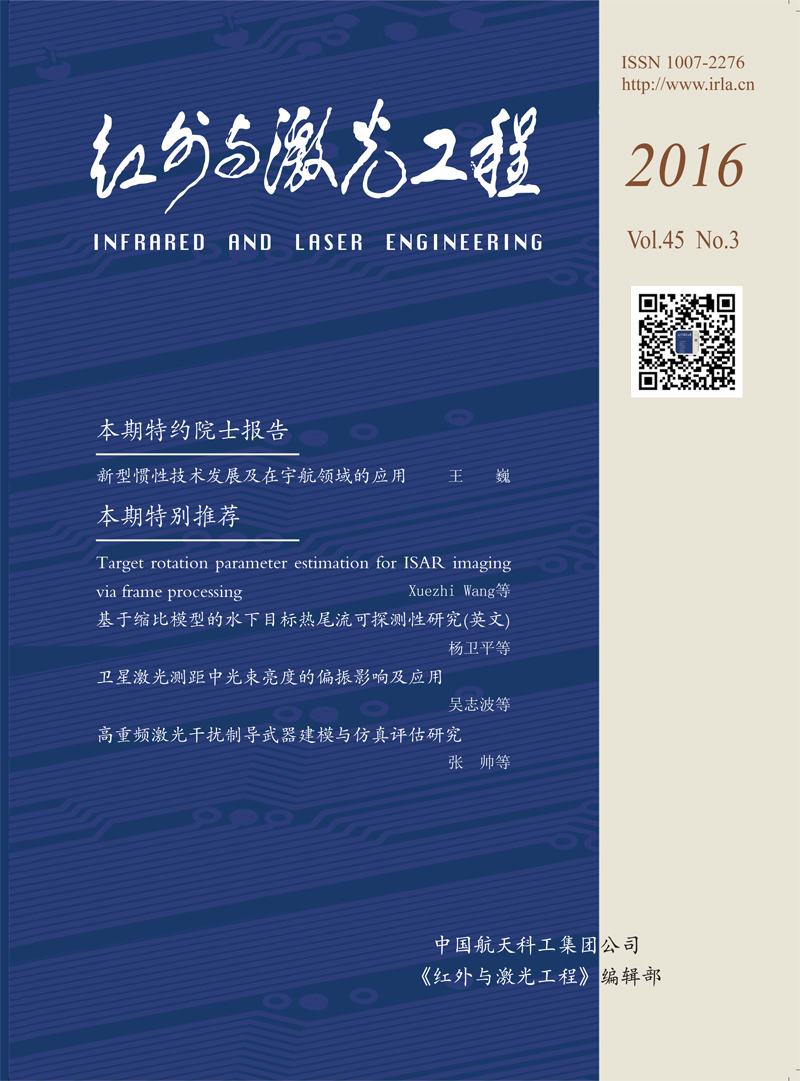Zhang Yue, Zhang Zhuo, Su Yun, Zheng Guoxian. Cooling system design for cryogenic imaging spectrometer with wide spectrum and high resolution[J]. Infrared and Laser Engineering, 2016, 45(3): 323001-0323001(8). doi: 10.3788/IRLA201645.0323001
| Citation:
|
Zhang Yue, Zhang Zhuo, Su Yun, Zheng Guoxian. Cooling system design for cryogenic imaging spectrometer with wide spectrum and high resolution[J]. Infrared and Laser Engineering, 2016, 45(3): 323001-0323001(8). doi: 10.3788/IRLA201645.0323001
|
Cooling system design for cryogenic imaging spectrometer with wide spectrum and high resolution
- Received Date: 2015-07-05
- Rev Recd Date:
2015-08-09
- Publish Date:
2016-03-25
-
Abstract
Cryogenic imaging spectrometer with wide spectrum and high resolution can be used to detect interplanetary mineral component and atmospheric composition. Due to the temperature of detected target in space exploration is very low, the infrared spectra in imaging spectrometer has to work in cryogenic environment to limit the noise from the imaging spectrometer itself to promote its spectral resolution. That is a challenge for the design of cooling system. Based on survey results about the cooling system of VIRTIS for Venus and Comet, the cooling system for cryogenic imaging spectrometer with wide spectrum and high resolution was designed and simulated. The simulation results show the temperature gradient of M and H detector is only 410-2 K. Detector temperature is less than 70 K. The shell temperature is 1301 K and frame temperature is 2001 K. All the results demonstrate the designed cooling system meets the design requirements. The results are significant for cooling system design in cryogenic imaging spectrometer, which is used widely in space exploration.
-
References
|
[1]
|
Coradini A, Capaccioni F, Drossart P, et al. VIRTIS:An imaging spectrometer for the ROSETTA mission[J]. Space Science Reviews, 2007, 128:529-559. |
|
[2]
|
Guillaume Bonello, Jean-Pierre Bibring, Francois Poulet, et al. Visible and infrared spectroscopy of minierals and mixtures with the OMEGA/MARS-EXPRESS instrument[J]. Planetary and Space Science, 2004, 52:133-140. |
|
[3]
|
Gabriele E, Pierre D, Giuseppe P, et al. Venus atmospheric and surface studies from VIRTIS on Venus Express[C]//Infrared Remote Sensing and Instrumentation, SPIE, 2011, 8154:1190-1193. |
|
[4]
|
Coradini A, Capaccioni F, Drossart P, et al. VIRTIS:the imaging spectrometer of the ROSETTA mission[J]. Adv Space Res, 1999, 24(9):1095-1104. |
|
[5]
|
Saggin B, Angrilli F, Debei S, et al. Thermal design of VIRTIS:A thermal mapper for the ROSETTA mission[C]//48th International Astronautical Congress, 1997. |
|
[6]
|
Ouyang Ziyuan, Xiao Fugen. The mars and its environment[J]. Spacecraft Environment Engineering, 2012, 29(6):591-601. (in Chinese)欧阳自远, 肖福根. 火星及其环境[J]. 航天器环境工程, 2012, 29(6):591-601. |
|
[7]
|
Ren Qifeng, Shen Mangzuo, Liao Sheng, et al. Design and analysis on dual-temperature zone of cryogenic optical system[J]. Infrared and Laser Engineering, 2008, 37(2):312-315. (in Chinese)任栖峰, 沈忙作, 廖胜, 等. 低温光学系统两级温区的设计与分析[J]. 红外与激光工程, 2008, 37(2):312-315. |
|
[8]
|
Bonsignori R, Coradini A, Drossart P, et al. VIRTIS:visual and infrared imaging spectrometer for the ROSETTA mission[C]//48th International Astronautical Congress, 1997. |
|
[9]
|
Collaudin B, Rando N. Cryogenics in space:a review of the missions and of the technologies[J]. Cryogenics, 2000, 40:797-819. |
-
-
Proportional views

-









 DownLoad:
DownLoad: